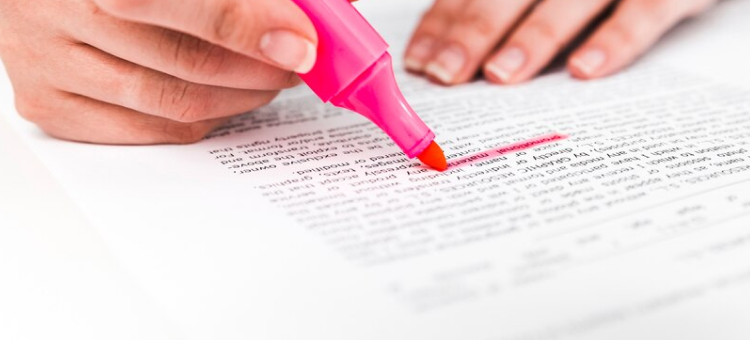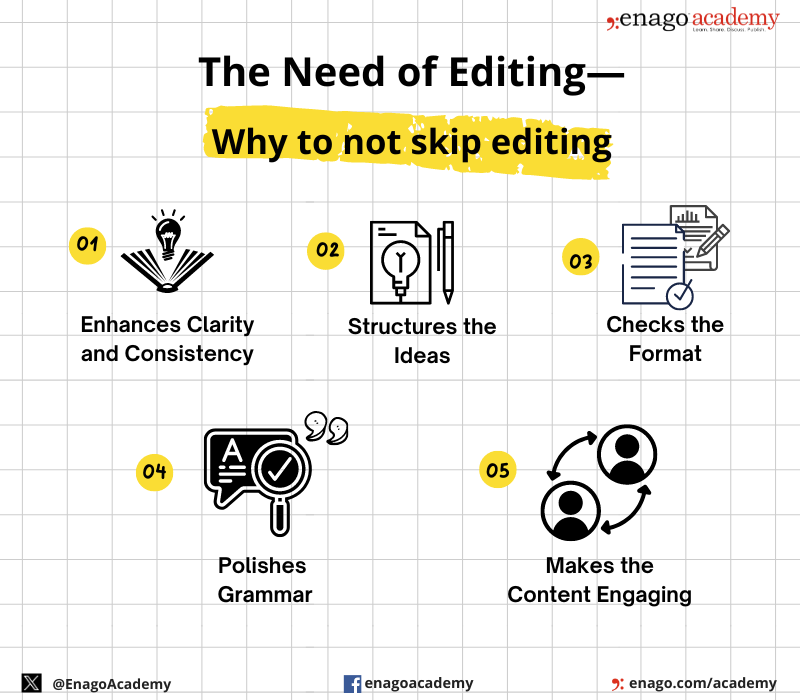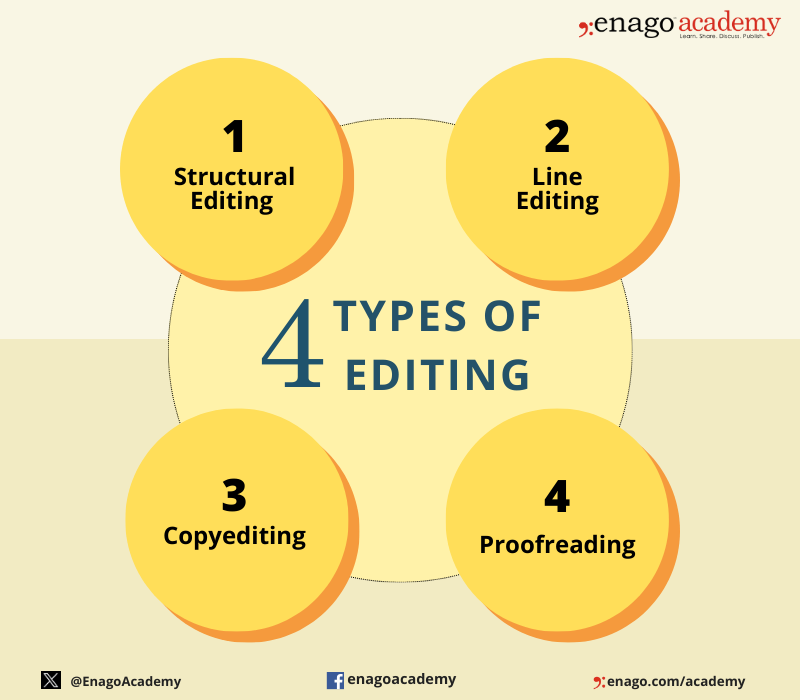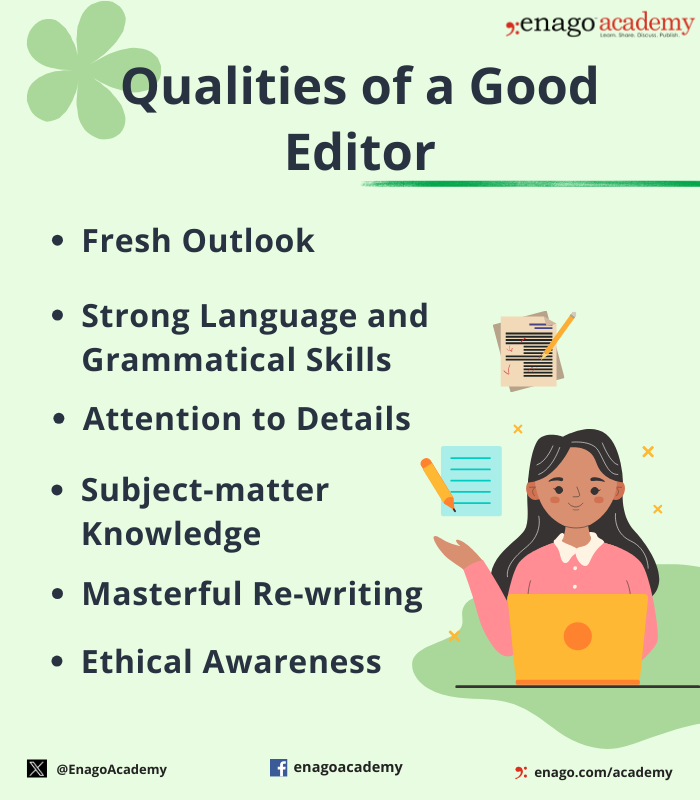Achieving Perfect Research with the Right Editing Techniques

Editing is a fundamental process that breathes life into the written word, transforming raw drafts into polished masterpieces. It serves as a critical bridge between a writer’s thoughts and the readers’ understanding.
Editors refine and shape writing to convey clarity, coherence, and impact. Therefore, exploring different forms and techniques of editing can help in the creation of compelling content.
The Need of Editing—Why to not skip editing
Editing is a transformative process that elevates the quality of a piece. Furthermore, it harnesses and shapes the content in a text to resonate with the readers. It remains a crucial part due to the following reasons:

1. Enhances Clarity and Consistency
- One of the primary functions of editing is to enhance the clarity and coherence of a work.
- Oftentimes, ideas flow freely during the creative process, resulting in redundancies and inconsistencies in the preliminary draft.
- However, editing can help the writers to rectify these issues.
- Additionally, it ensures that the intended message is conveyed clearly. It also introduces consistency in tone, style, and formatting.
- Thus, it fosters a sense of professionalism and coherence that captivates the readers.
2. Structures the Ideas
- Editing can help writers to refine their sentences and improve the overall structure.
- It helps in the arrangement of ideas and remove the unnecessary elements that might be a deviation from the central theme.
3. Checks the Format
- Editing revises the format of the entire text.
- It checks for aspects like font, font size, bullets, numbering, etc.
- Additionally, it ensures that the number of words in the text does not surpass the limit.
4. Polishes Grammar
- Editing polishes the written material and avoids grammatical errors in the final document.
- Proper grammar, punctuation, and syntax showcase the true worth of a content.
- A misplaced comma or an incorrectly used word can drastically alter the meaning of a sentence, leading to misinterpretations and unintended consequences.
- Therefore, it ensures that the final product is seamless, and conveys the content in a right manner.
5. Makes the Content Engaging
- Editing filters the content and trims off the excess details.
- By removing redundancies and irrelevant details, editors streamline the narrative, thereby making it more engaging and comprehendible.
Editing not only correct errors but also shapes the language, provoke thought, and elicit action. Therefore, it is a transformative process that enhances clarity, precision, credibility, and impact.
Types of Editing — Know the difference
Editing is a multi-faceted endeavor, encompassing various stages that contribute to the overall refinement of a piece. The four primary types or stages of editing are:

1. Structural Editing
Structural editing is also known as developmental or substantive editing. The content in the document may undergo revision during this stage of editing. It ensures that the narrative unfolds smoothly and resonates with the intended audience.
By identifying strengths and areas for improvement, it ensures that a manuscript adheres to literary standards. Furthermore, this can guide the authors to refine their concepts and sharpen their themes. Therefore, it is the most rigorous and crucial step in editing. Structural editing is therefore used to:
- Review the Content
- Improve the Structure of the Content
- Check the Logical Flow
- Rewrite Sections
- Maintain the Length of the Document
2. Line Editing
Line editing checks the tone, clarity and style of writing. It ensures that the information in the content is delivered to a reader in a right manner. As a result, this reduces the chances of misinterpretation. Additionally, it also ensures that the ideas in the text remain consistent; thereby making the content engaging. Furthermore, it removes the repetitive phrases or words; therefore, making the text effortless to understand. Line editing is used to:
- Polish the Text
- Improve the Grammar
- Check the Vocabulary
- Maintain the Tone of the Sentence
- Ensure Consistency
- Improve the Details
3. Copyediting
Copyediting hones in on the finer details, focusing on grammar, punctuation, spelling, and sentence structure. Additionally, it polishes the text to enhance its readability and adherence to linguistic conventions. Furthermore, it checks for nuances in spellings and consistency. Copyeditors also fact-check and verify references, contributing to the overall accuracy and credibility of the content. Copy editing is used to:
- Maintain Consistency in the Text
- Enhance Readability
- Fact-check
- Focus the Key-points
4. Proofreading
Proofreading is the final stage of editing. It involves a meticulous examination of the text for typos, formatting errors, and minor inconsistencies like unwanted spaces in the document. It is the last line of defense before publication, ensuring that the content is free of distracting errors that could diminish its impact. Proofreading can therefore be used to:
- Check Spellings
- Check Punctuations
- Remove Unwanted Spaces
- Check the Formatting
These steps may reduce the error in your content and ensure that the ideas are delivered properly to the targeted audience.
Example of a Text Before and After Editing
Before Editing:
The research conducted was focused on determining the effects of increased ultraviolet (UV) radiation exposure on various species of plants. The plants was subjected to higher levels of UV radiation for a period of four weeks and the results showed that there was a significant impact on the growth and development of the plants. This indicates that UV radiation can have a detrimental effect on plant.
After Editing:
The study aimed to investigate the implications of heightened ultraviolet (UV) radiation exposure on a range of plant species. Over a span of four weeks, these plants were subjected to elevated UV radiation levels. The findings revealed a notable influence on both the growth and overall development of the plants. This underscores the potentially adverse physiological effects of UV radiation on plants.
What difference could you observe between the edited and unedited text?
The edited text has a better flow of contents with a better grammar. This improved the overall structure and impact of the text; thereby making it appear more professional.
Editors can ease the process of editing. A third person reviewing your document can bring out fresh perspectives in your content. As a result, it may increase the chances of getting your manuscript published by the journal of your interest.
Qualities of a Good Editor
Editing is a skill that requires a hawk’s eye for details. A good editor holds the power to generate a powerful impact out of the written text. Furthermore, they can help to convey your intended message to the right audience correctly.
Here are some qualities to be a good editor:

These qualities can make someone a good editor. However, hiring professional editors can convert your manuscript to an error free and a high-quality output. Researchers and students can resort to reliable editing services such as Enago, to make their draft publication-ready. These services can be a second pair of eyes to scrutinize and polish your work to increase the credibility and adherence to the guidelines.
Frequently Asked Questions
The different types of editing are developmental editing, line editing, copyediting and proofreading.
A good editor must possess qualities such as fresh outlook, excellent language, attention to details, subject-matter knowledge and ethical awareness.
Line editing and copyediting are two different stages of editing. The difference between line editing and copyediting are as follows:
1. Line editing is the second stage of editing while copyediting is the third stage of editing.
2. Line editing deals with the style of writing while copy editing improves the flow of writing.
3. Line editing improves the flow and readability while copyediting fixes the technical errors and adheres the writing to a particular style.
Editing is important as it makes your writing more impactful by organizing the content. It ensures the accuracy in language and facts and provides clarity to the ideas in the text.









The most brilliantly written article I’ve ever read
Well written! Thank you.